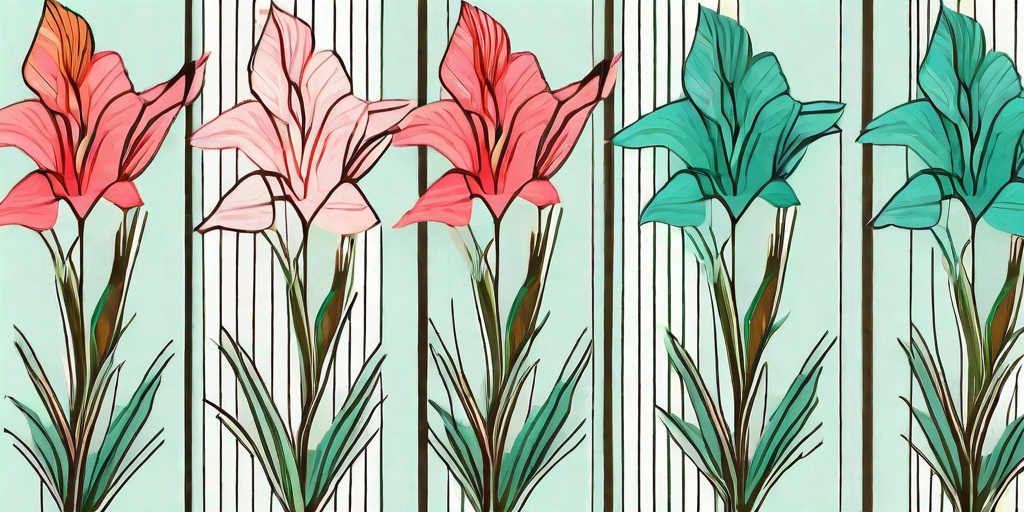
When it comes to gardening, there's nothing quite like the thrill of seeing your gladiolus plants stand tall and proud. But, like a toddler taking their first steps, these beauties need a little support to reach their full potential. And that's where staking comes in. It's not just about helping your plants stand up straight, it's about giving them the confidence to grow and bloom like the floral superstars they are.
Why Stake Gladiolus Plants?
Now, you might be thinking, "Why should I bother staking my gladiolus plants? They're not pole dancers!" Well, while your plants might not be spinning around a pole, they do need a little support to keep them from flopping over. You see, gladiolus plants are like the supermodels of the plant world. They're tall, they're beautiful, and they're not afraid to show off their stunning blooms. But, just like a supermodel in high heels, they can sometimes topple over if they're not properly supported.
Staking your gladiolus plants helps them stand tall and proud, showcasing their beautiful blooms for all to see. It also prevents damage to the stems, which can occur if the plants are left to flop over. So, in essence, staking your gladiolus plants is like giving them a little plant-sized crutch to lean on. It's a simple act of kindness that can make a big difference to your garden.
How to Stake Gladiolus Plants
Now that we've established why staking is important, let's move on to the fun part: how to do it. Don't worry, it's not rocket science. In fact, it's as easy as pie. And who doesn't love pie?
First, you'll need to get your hands on some stakes. These can be wooden or metal, depending on your preference. You'll also need some soft ties to secure the plants to the stakes. Once you've got your supplies, you're ready to get staking!
Step 1: Position the Stake
Start by positioning the stake next to the plant. It should be close enough to provide support, but not so close that it damages the plant. Remember, the stake is there to help the plant, not harm it. Think of it as the plant's bodyguard, not its prison warden.
Once you've found the perfect position, push the stake into the ground. It should be deep enough to be stable, but not so deep that it's difficult to remove later. A good rule of thumb is to push the stake about a third of its length into the ground.
Step 2: Secure the Plant
Next, gently tie the plant to the stake using the soft ties. Be careful not to tie it too tightly, as this can damage the stem. The tie should be snug, but not constricting. It's a bit like tying a tie: you want it to be secure, but not so tight that you can't breathe.
Continue tying the plant to the stake at regular intervals as it grows. This will provide ongoing support and help the plant maintain its upright position.
Common Mistakes to Avoid
Staking gladiolus plants is pretty straightforward, but there are a few common mistakes that gardeners often make. Let's take a look at these, so you can avoid them and stake your claim to gardening success.
Staking Too Late
One of the most common mistakes is waiting too long to stake the plants. If you wait until the plants are already tall and heavy, you risk damaging the stems when you try to stake them. It's best to stake the plants when they're still young and flexible.
Using the Wrong Materials
Another common mistake is using the wrong materials. Not all stakes and ties are created equal. Some are too harsh and can damage the plants, while others are too weak and won't provide enough support. Choose your materials wisely to ensure your plants get the support they need without any unnecessary damage.
FAQs
When should I stake my gladiolus plants?
The best time to stake your gladiolus plants is when they're about a foot tall. This will give them the support they need to grow tall and strong, without risking damage to the stems.
What type of stake should I use?
You can use either wooden or metal stakes, depending on your preference. Just make sure they're sturdy enough to support the plants and won't cause any damage.
How often should I check the stakes?
It's a good idea to check the stakes regularly to make sure they're still providing adequate support. If the plants have grown significantly, you may need to adjust the ties or add more.
Conclusion
Staking your gladiolus plants is a simple and effective way to support their growth and showcase their beautiful blooms. With a little time and effort, you can help your plants stand tall and proud, just like the floral superstars they are. So go on, stake your claim and watch your garden flourish!















